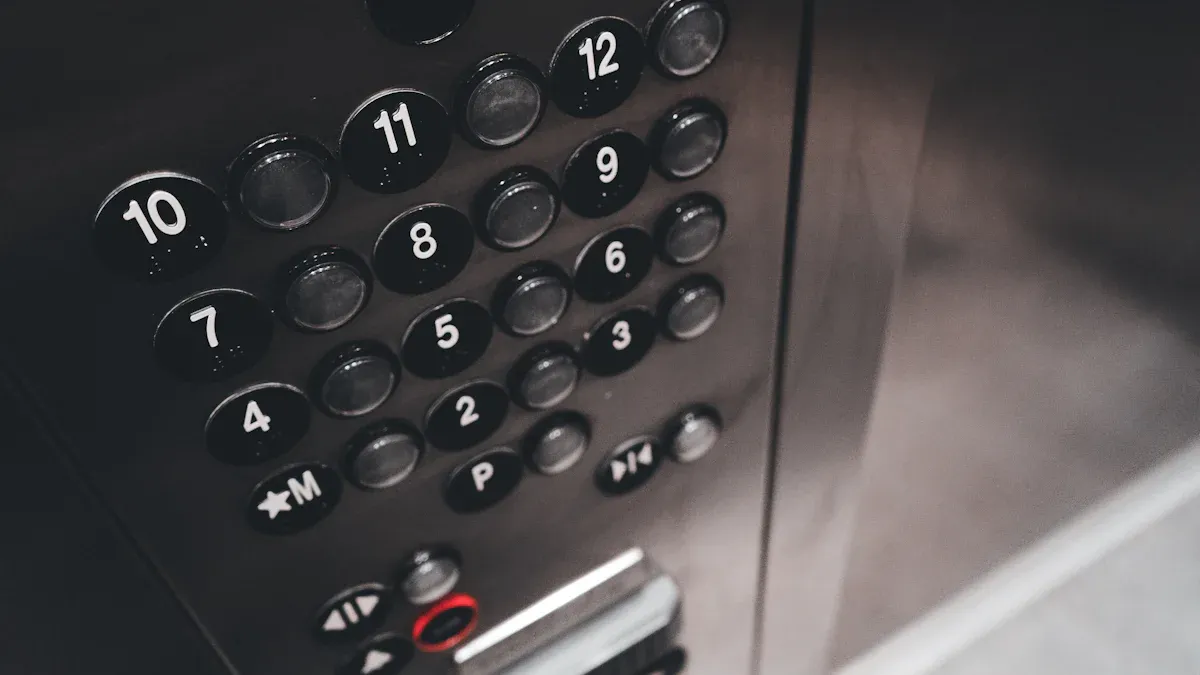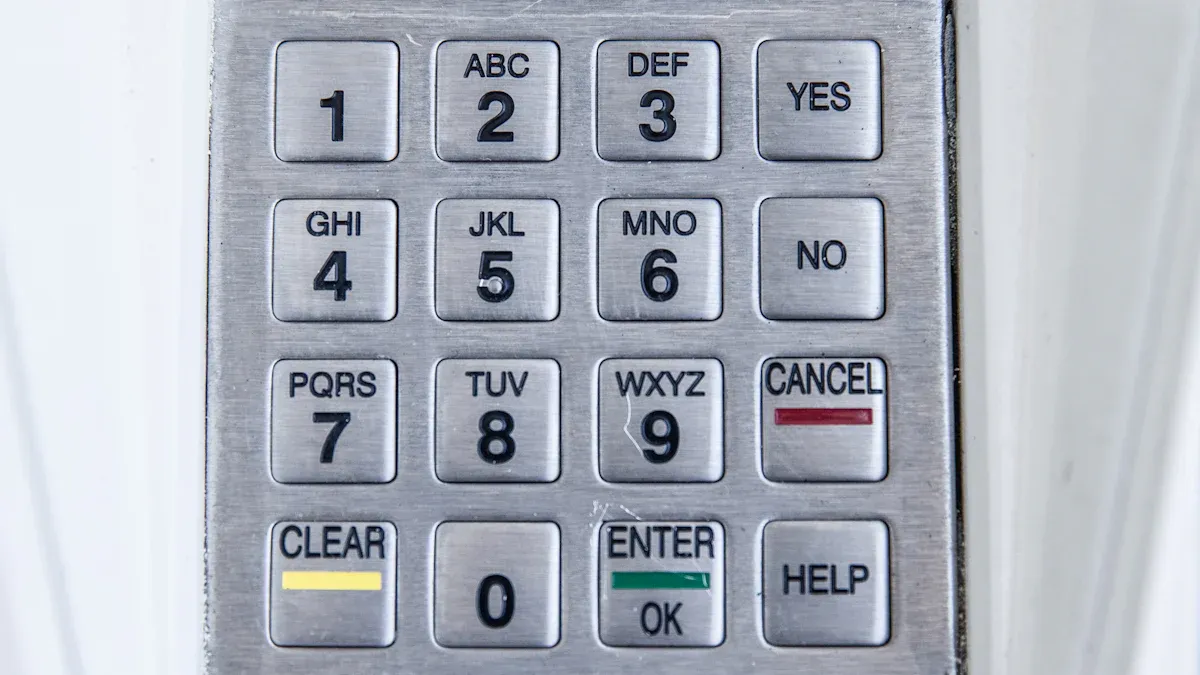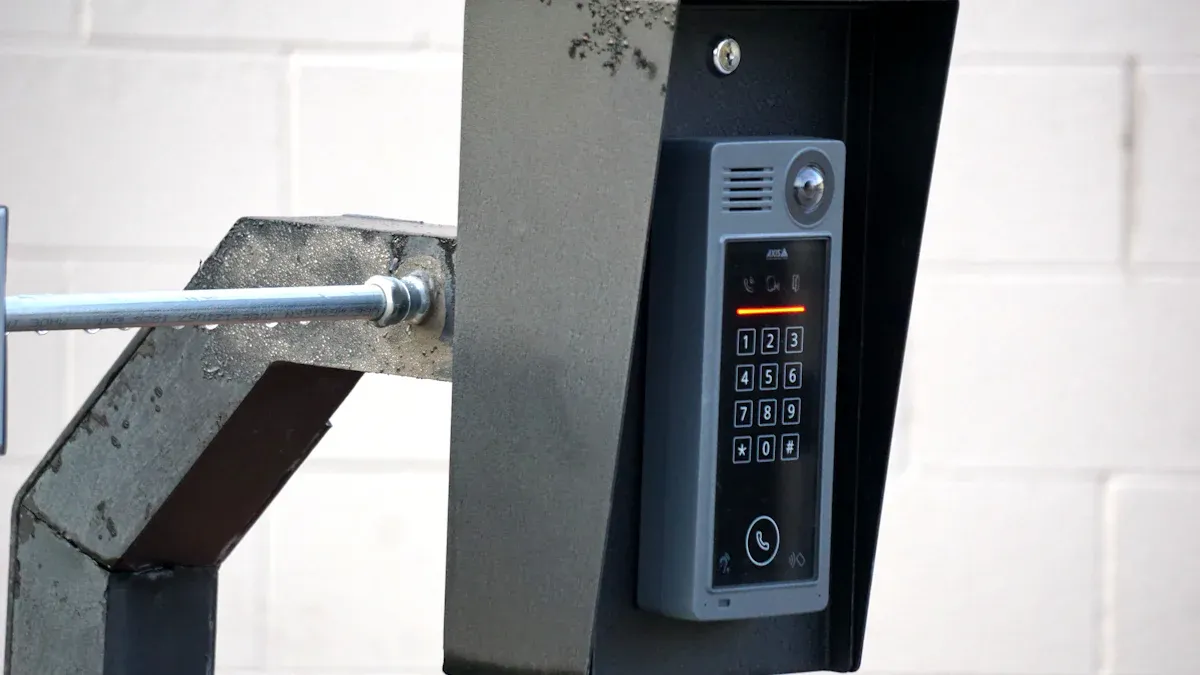
Choosing the right industrial keypad is crucial for your application’s success. You need to consider factors like durability, compatibility, and functionality. A UART industrial keypad offers reliable communication for many systems, while a zinc alloy keypad provides excellent strength for demanding environments. Matching features to your needs ensures optimal performance and long-term value.
Key Takeaways
- Pick a keypad with the correct IP rating for your area. Higher ratings like IP65 or IP67 keep out dust and water.
- Choose a keypad based on how often it will be used. For frequent use, find ones tested for many keystrokes and strong build.
- Make sure the keypad’s baud rate fits your system’s needs. This avoids errors and helps data move smoothly.
Define Your Application Needs
Environmental Conditions and Protection Ratings
The environment where you plan to use the keypad plays a significant role in its selection. Industrial settings often expose devices to dust, moisture, and extreme temperatures. You need to check the keypad’s protection ratings, such as IP (Ingress Protection) codes, to ensure it can withstand these conditions.
Tip: If your application involves outdoor use or exposure to harsh chemicals, look for keypads with higher IP ratings, such as IP65 or IP67. These ratings indicate resistance to water and dust.
Consider the material of the keypad. Zinc alloy keypads offer excellent durability and corrosion resistance, making them ideal for rugged environments. For cleanroom or medical applications, opt for keypads with antimicrobial coatings or sealed designs.
Usage Frequency and Durability Standards
How often the keypad will be used determines its durability requirements. Frequent use demands a keypad with high wear resistance and long-lasting tactile feedback. You should look for models tested for millions of keystrokes to ensure reliability over time.
Industrial keypads often feature mechanical switches or membrane designs. Mechanical switches provide better durability and tactile response, while membrane keypads are more cost-effective for lighter use.
Note: If your application involves heavy-duty operations, prioritize keypads with reinforced construction and certifications like MIL-STD-810 for shock and vibration resistance.
Keypad Size, Layout, and User Interface
The size and layout of the keypad should align with your application’s user interface requirements. Compact keypads work well for space-constrained environments, while larger layouts are better for applications requiring multiple functions.
Evaluate the number of keys and their arrangement. Numeric keypads are ideal for data entry, while alphanumeric layouts suit applications requiring text input. You should also consider the tactile feel of the keys. Smooth, responsive keys enhance user experience and reduce input errors.
Tip: If your application involves low-light conditions, choose a keypad with backlighting for improved visibility.
A UART Industrial Keypad often integrates seamlessly with systems requiring serial communication. Its compatibility with UART protocols ensures efficient data transmission, making it a reliable choice for various industrial applications.
Evaluate Technical Specifications of UART Industrial Keypads

UART Protocol Compatibility and Integration
При выборе a UART industrial keypad, you must ensure it aligns with your system’s communication protocols. UART (Universal Asynchronous Receiver-Transmitter) is a widely used serial communication protocol. It enables seamless data exchange between the keypad and your application.
Start by checking the baud rate compatibility. The baud rate determines how fast data transfers between devices. Most UART industrial keypads support standard baud rates like 9600 or 115200 bps. Ensure the keypad’s baud rate matches your system’s requirements to avoid communication errors.
Tip: If your application involves multiple devices communicating simultaneously, look for keypads with advanced UART features like hardware flow control. This feature prevents data loss during high-speed communication.
Integration is another critical factor. A UART industrial keypad should connect easily to your system’s microcontroller or processor. Many keypads come with pre-configured UART settings, simplifying the setup process. Some models also include libraries or sample code to help you integrate the keypad into your software.
Power Requirements and Efficiency
Power consumption plays a significant role in the performance of a UART industrial keypad. You need to evaluate the keypad’s voltage and current requirements to ensure compatibility with your power supply.
Most keypads operate within a voltage range of 3.3V to 5V. However, some industrial models may require higher voltages. Check the keypad’s datasheet for detailed power specifications.
Energy efficiency is equally important, especially for battery-powered applications. Keypads with low-power modes can extend battery life. These modes reduce power consumption when the keypad is idle.
Note: If your application involves continuous operation, choose a keypad with efficient power management features. This ensures reliable performance without frequent power interruptions.
Onboard Microcontrollers and Performance
Some UART industrial keypads include onboard microcontrollers. These microcontrollers handle tasks like key scanning, debouncing, and data transmission. They reduce the processing load on your main system, improving overall performance.
When evaluating onboard microcontrollers, consider their processing speed and memory capacity. Faster microcontrollers can handle complex tasks more efficiently. Sufficient memory ensures smooth operation, even in applications with high data demands.
Keypads with programmable microcontrollers offer additional flexibility. You can customize the keypad’s behavior to suit your application. For example, you might program specific keys to trigger unique functions or send custom data packets.
Tip: If your application requires high-speed data processing, prioritize keypads with advanced microcontrollers. These models deliver faster response times and better reliability.
Assess Features and Vendor Options

Customization and Programmable Keys
Customization plays a vital role in tailoring a keypad to your application. Many industrial keypads offer programmable keys, allowing you to assign specific functions or commands to individual buttons. This feature enhances efficiency by reducing the need for additional input devices.
You should evaluate the level of customization available. Some keypads allow you to reprogram keys directly, while others require software tools. For advanced applications, look for models that support macros or multi-key combinations. These features can streamline complex operations and improve user productivity.
Tip: If your application involves frequent updates or changes, choose a keypad with easily reprogrammable keys. This flexibility saves time and reduces downtime.
Backlighting, Display, and Security Features
Backlighting improves visibility in low-light environments. Keypads with adjustable brightness levels or color options provide added convenience. If your application requires user feedback, consider models with integrated displays. These displays can show status updates, error messages, or other critical information.
Security features are equally important. Some keypads include encryption to protect data during transmission. Others offer tamper-resistant designs to prevent unauthorized access. For high-security applications, look for keypads with biometric authentication or PIN entry capabilities.
Note: A UART Industrial Keypad with backlighting and security features ensures both usability and data protection, making it a versatile choice for industrial settings.
Vendor Reputation, Warranty, and Support
Choosing a reliable vendor ensures long-term satisfaction. Research the vendor’s reputation by reading customer reviews and checking industry certifications. A well-established vendor often provides better product quality and customer service.
Warranty coverage is another critical factor. A longer warranty period reflects the manufacturer’s confidence in their product. You should also assess the availability of technical support. Vendors offering 24/7 support or detailed documentation can help you resolve issues quickly.
Tip: Partnering with a reputable vendor reduces risks and ensures you receive a durable, high-performing keypad.
Matching a UART industrial keypad to your application ensures optimal performance. Focus on compatibility, durability, and cost-effectiveness when making your choice.
Tip: Research vendors thoroughly. Read product reviews and compare warranties to avoid costly mistakes. A well-informed decision guarantees a reliable, long-lasting keypad tailored to your needs.
By aligning features with your requirements, you maximize efficiency and value.
FAQ
What does UART mean, and why is it important for keypads?
UART stands for Universal Asynchronous Receiver-Transmitter. It enables serial communication between devices. This ensures seamless data exchange between your keypad and the connected system.
How do I know if a keypad is durable enough for my application?
Check the keypad’s IP rating and certifications like MIL-STD-810. These indicate resistance to dust, water, shock, and vibration, ensuring durability in harsh environments.
Can I customize a UART industrial keypad for my specific needs?
Yes! Many keypads offer programmable keys and customizable layouts. Some models even support macros, allowing you to assign complex functions to single keys.
Tip: Look for keypads with user-friendly software for easier customization.


